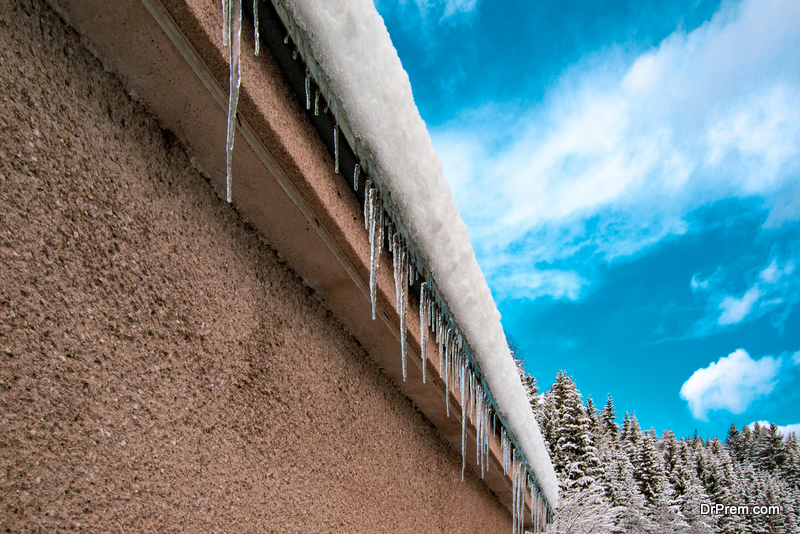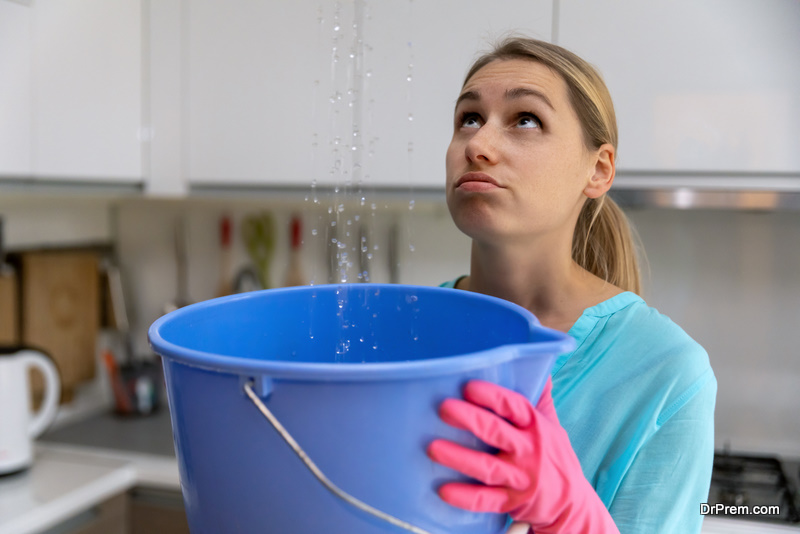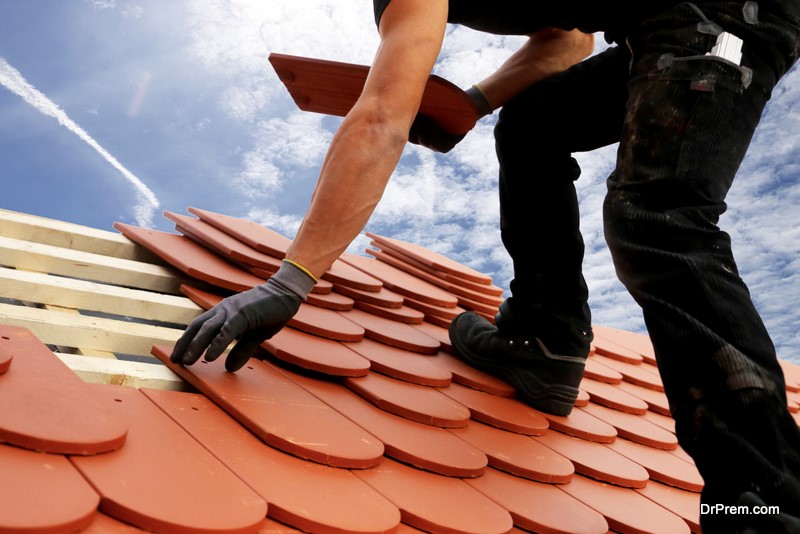Your roof is a critical part of your home that protects you and your loved ones from extreme weather conditions. So you always want to inspect your roof for any ice or snow damage during the winter seasons. This will help you spot any roof issues before inclement winter weather strikes. Similarly, you can enhance the longevity and integrity of the roof by carrying out regular maintenance.
Below, we’ve highlighted the critical impacts that snow and ice can have on your roof and the steps you can take to prevent the damage.
1. Snow and Ice Causes Ice Dams

During the cold winter periods, your roof should allow water and snow to slide off. However, sometimes this snow melts and freezes at specific areas within the roof. For example, at the roof’s edges due to warm air escaping from the warm interiors and melting the snow in the region.
The melted snow eventually freezes, causing a dam of ice. This dam acts as a barrier, preventing snow and water from leaving the roof. With time, the dam builds up, causing other issues such as water leaks, sagging, etc.
2. Exerts Too Much Pressure on Your Roof
Snow accumulation exerts pressure on the roof, causing damage to the shingles, roofing material, etc. If the weight of the snow is intense, this could lead to a sagging roof. The snow build-up problem becomes intense if the underlying roofing structure is weak or damaged.
If ice and snow accumulate on the roof, it’s prudent to consult a roofing professional. This is especially true if your roof is old or isn’t in the best structural form.
3. Leads to Water Leaks

Besides exerting extra force on your roof and causing ice dams, snow also causes or worsens water leaks. During winter, snow can quickly get into the tiny cracks or beneath the roof shingles. Once the winter period is over, the snow inside cracks and those beneath the shingles melts. The water then soaks the insulation, ceilings, and walls, leading to water damage, mold growth, etc.
4. Causes Cracks on Roofs
If your roof has some cracks or gaps in the shingles, water will accumulate in them when it rains. During winter and as temperature drops, the water will expand, causing the cracks to enlarge. This expansion can also tear the shingles causing further roof damage. A regular roof inspection is necessary to fix this problem, especially before winter.
How to Prevent Damage from Snow and Ice

If you are to prevent roof damage from snow and ice, you need to prioritize a couple of things. These include:
- Proper roof maintenance. Routinely inspecting your roof is necessary to spot roof issues before they worsen. For instance, you can find and fix gaps or cracks in roof shingles to avoid further damage during winter. A rule of thumb is to hire a professional roofing contractor to inspect your roof and recommend the best repair or maintenance solutions.
- Roof Repairs. If a roof section is damaged, you can opt for a roof repair service. This is cheaper and faster than roof replacement. However, it doesn’t fix underlying roof issues. Before repairing your roof, it’s best to schedule a professional roof inspection service. That way, you’ll get the best value for your money.
- Roof Replacement. If your roof is old or damaged and has exceeded its lifespan, roof replacement is the better option. Once you notice water leaks, missing shingles, or color changes, it could be time to schedule a roof inspection. Once you’ve decided to replace the roof, you should keenly choose a roofing material that will last and withstand extreme weather conditions.
When deciding on the suitable roofing material, you should understand the material’s resistance to extreme winter conditions. For instance, copper has a life expectancy of 50 years. It’s also resistant to mold, hailstorms, and other water-related damages. Clay tile and slate tile roofing options are the other good options that are resistant to water damage. The two are also great insulators, limiting ice dam formation and roof ice damage issues.
Get Help Where Necessary
When it comes to preventing roof damage during winter, preparation is vital. Instead of waiting until the roof leaks, you want to be proactive. Conduct regular roof inspection and maintenance services to understand the current roof conditions. Not all roof types and roofing materials are the same. So you should ensure that your roof is designed to match the local weather conditions. And that the roofing material is durable and reliable.
That said, you should always work with an expert and licensed roofing contractor for the best results. The latter will help with roofing inspection services, repairs, and replacements if any. Many DIY enthusiasts can handle simple roof repairs. However, when it comes to major repairs and replacements, it’s best to seek professional help. This is especially true when working with newer roofing materials, and you do not want to forfeit the manufacturer’s warranty.
Article Submitted By Community Writer




